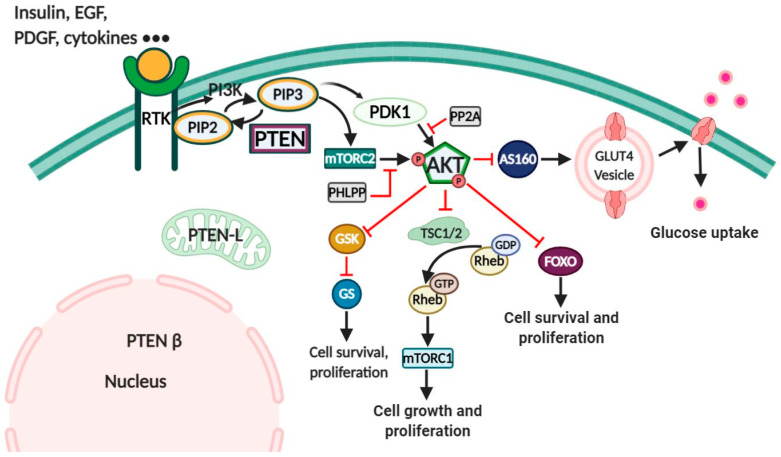Figure 1.
PTEN and PI3K/Akt signaling pathway. Triggering of PI3K by ligands-activated receptors (RTK, GPCR) leads to PIP3 generation. Akt is then activated through phosphorylation by mTORC2 and PDK1, which triggers the downstream signaling through a series of phosphorylation reactions. Activated Akt promotes translation of glucose transporter 4 (GLUT4) through direct inhibition of AS160 (Akt substrate of 160 kDa), which leads to the increase of glucose uptake. Furthermore, through phosphorylation, Akt inactivates forkhead box protein O (FOXO), tuberous sclerosis complex 1/2 (TSC1/2), and glycogen synthase kinase 3 (GSK3), which increases cell survival, cell growth, and proliferation [23]. PTEN dephosphorylates PIP3 to PIP2 and reduces PIP3 accumulation. Black arrows (activating), red arrows (blocking).

